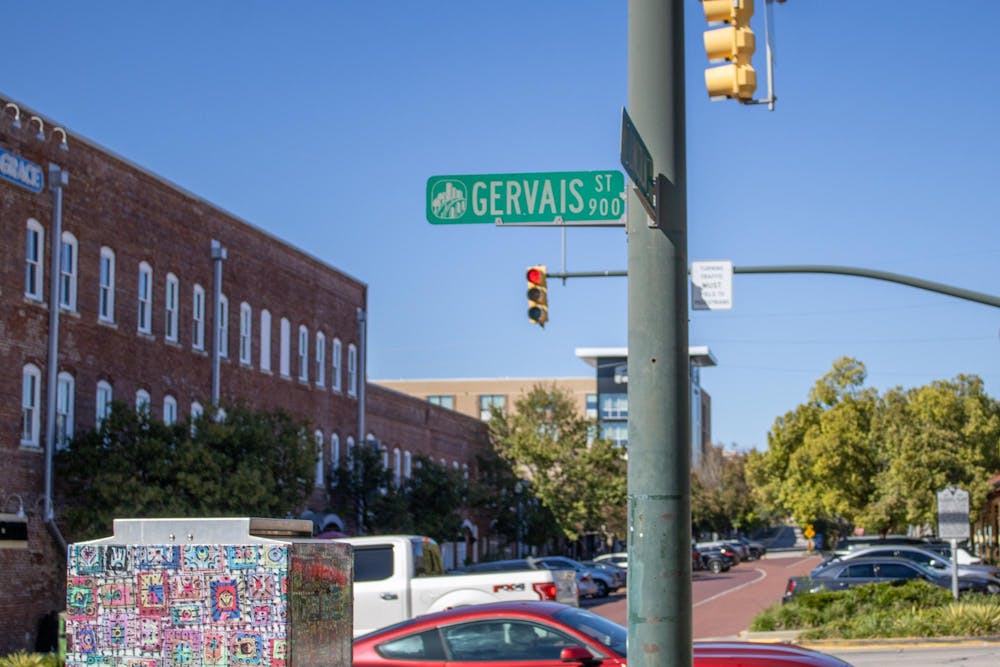Though street names might not seem like an exciting topic at first glance, some of Columbia’s busiest roads pay tribute to fascinating history that’s not immediately apparent.
Often named after significant Revolutionary War figures or people who contributed to the development of Columbia, there’s an interesting story behind several of the streets USC students and Columbia residents travel on every day.
Wayne Street
A fairly short road running through the center of the Vista, Wayne Street is named for Revolutionary Major General Anthony Wayne, a Pennsylvania native.
Wayne helped drive the last remaining British troops from South Carolina and Georgia after leading his troops from the northern states. Near the end of the American Revolution, his troops were the first to arrive in Charleston to reclaim it from the British. These accomplishments earned him the honor of an important road bearing his name.
Lady Street
Lady Street, which runs through the heart of downtown Columbia, is named for the original First Lady of the United States, Martha Washington.
The street runs directly parallel to a road named after her husband: Washington Street. She was often referred to as "Lady Washington," giving Washington Street's partner its name.
Gervais Street
One of the busiest roads in the city, Gervais Street is named for French Huguenot John Lewis Gervais. Gervais, like many other Huguenots fleeing religious persecution in Europe, left France for South Carolina in 1764.
Gervais was one of the original sponsors of the bill that moved the state capital from Charleston to Columbia, cementing him as a significant figure in the origin of Columbia.
Being such an important figure in the development of Columbia itself gave clear reason to pay tribute to Gervais with one of the busiest and most vital roads in the city, with the State House itself being placed on Gervais.
Gadsden Street
Running near the outskirts of downtown Columbia, Gadsden Street is named for Christopher Gadsden, commander of the first South Carolina Regiment of the Continental Army during the American Revolution.
A founding member of the Charleston Sons of Liberty, Gadsden also held the short-lived title of vice president of South Carolina, eventually being renamed to lieutenant governor.
Also bearing Gadsden's namesake is the Gadsden flag, which bears the striking black-on-yellow snake and "DONT TREAD ON ME" lettering that today is a common symbol often viewed as libertarian.
Like many other Southern figures in the Revolutionary period, Gadsden preached the American ideals of freedom and independence while also being a slaveholder, a reminder of the contradictory nature of the many figures such as Gadsden from this period.
Whaley Street
Being a near equal distance between USC's campus, Williams-Brice Stadium and Founders Park, Whaley street is vital for USC students.
Whaley Street, formerly Indigo Street, is named for businessman W. B. Smith Whaley.
Whaley built the Richland, Olympia and Granby mills among numerous others in the early 20th century, bringing important financial growth to Columbia. Olympia Mill was one of the largest and most advanced mills in the world, built by Whaley between 1899 and 1900.
The mills now act as student apartment buildings, closely located to USC.
Pendleton Street
Like Gervais, Pendleton Street is named for one of the progenitors of Columbia. Judge Henry Pendleton supported the original bill establishing Columbia as the state capital, along with being one of the original purchasers of the land Columbia is.

After being elected as a South Carolina judge in 1776, Pendleton was captured by the British in 1782 but was eventually released. Pendleton also opposed the ratification of the Constitution in 1788, being one of a small number of South Carolina politicians to do so, but died later the same year as if karmic punishment for doing so.
Pendleton, like Greene or Sumter, is likely one of the most traveled streets by USC students due to its central campus placement parallel to the Horseshoe. The street took Pendleton's name, signifying his importance in Columbia's origin as a capital city, with a street that runs in such a prominent location in the city.
Hampton and Gregg Street
Many of Columbia's street names surprisingly avoided being named in honor of Confederate figures, with the exceptions of Hampton and Gregg Street.
The former's namesake, Wade Hampton III, was largely responsible for the death of Reconstruction in South Carolina during his gubernatorial term by negotiating the removal of federal troops from South Carolina. The latter street, Maxcy Gregg, was a particularly radical secessionist and slavery advocate, promoting the revival of the Transatlantic slave trade in 1850, decades after it was ended in the United States.
Street names in Columbia can be key to understanding its past, much like the statues surrounding the Statehouse. They both memorialize positive figures in Columbia's history as well as highlight aspects of South Carolina history like slavery and segregation. Columbia's street names often carry stark reminders of the complex nature of our city's history.

